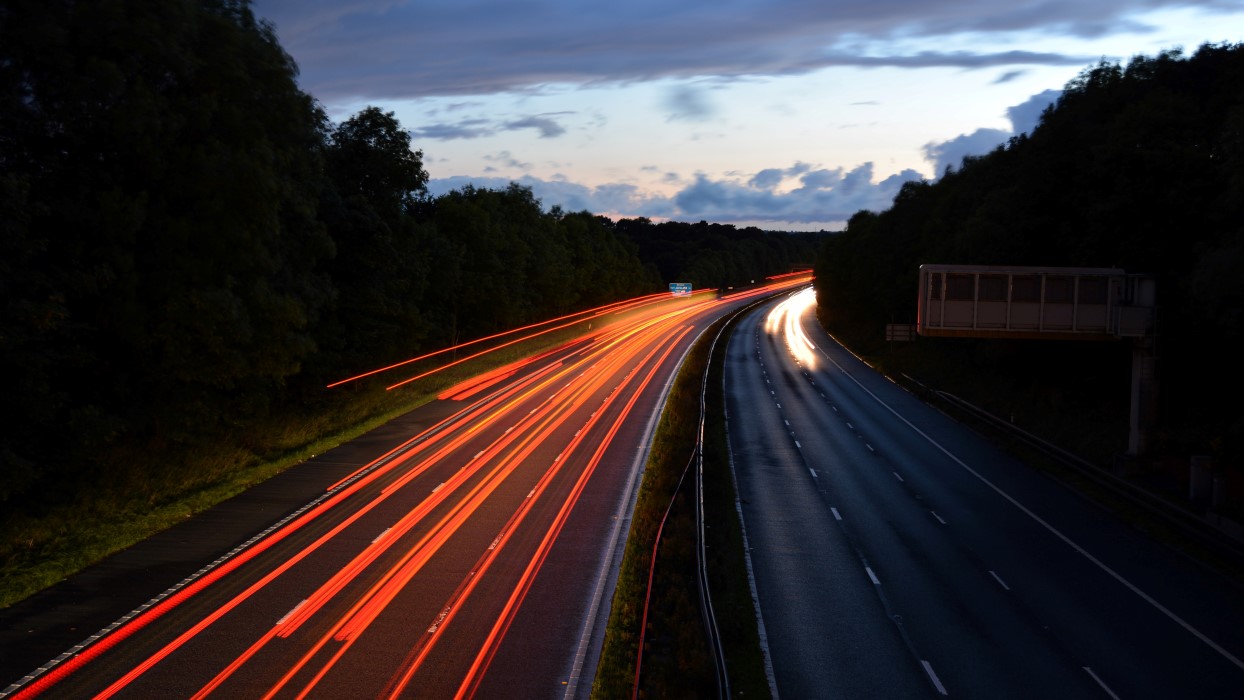The time it takes to charge an electric vehicle (EV) varies based on a couple of factors: the power source and the vehicle’s charging capacity. The same basic ideas are at play if you wanted to know how long it takes to fill up a swimming pool: knowing the flow rate of your hose as well as the exact volume of your pool is essential to answer the question.
To get a rough estimate of the amount of time required to charge an EV, divide the vehicle’s battery capacity (listed in kWh) by the energy delivery rate of the charging device (in kW).
Note: every EV battery contains an onboard charger that converts AC power into direct current (DC). This component has its own maximum power rating, effectively capping charging speed.
To illustrate using a real-life example, let’s consider the Chevrolet Bolt. The 2021 model comes equipped with a 66 kWh battery that accepts up to 7.2 kW of AC charging at any given time.
Fully charging this battery using a Level 1 charger rated at 1.4 kW would take over 47 hours and eight minutes. Level 1 units often come bundled with the car. While they can provide a charge from a standard 120-volt wall outlet, their low power output produces what is known as a “trickle charge,” making them best suited for smaller batteries like those found in plug-in hybrid vehicles.
66 kWh ÷ 1.4 kW = 47.14 hours
Sending power to this battery using a Level 2 charger would complete the operation in less time. Level 2 chargers use 240-volt power sources to deliver as much as 19.2 kW to the battery.
A charger that outputs 7.2 kW, which is the maximum power the Bolt’s onboard inverter is designed to accept, would be complete after a little over nine hours.
66 kWh ÷ 7.2 kW = 9.17 hours (9 hours and 10 minutes)
If we use a Level 2 charger that supplies more than 7.2 kW of power, the Bolt would still not charge faster than nine hours and 10 minutes because its battery cannot accept the extra kilowattage.
This formula assumes that energy flow is constant throughout the charging cycle. However the rate of energy delivery slows down as the battery approaches full capacity to avoid overloading it. You may have seen this effect in action when you charge your smartphone – it may take longer to “fill” the battery once it has achieved a high charge level. The AC charging curve is less pronounced than the DC curve: charging speed slows down at around the 90th percentile. K.C. Colwell of Car and Driver suggests adding 10% to the result achieved using the formula to compensate for this.
9.17 x 10% = 0.92 hours
(adding an additional 55 minutes brings the total to 10 hours and five minutes)
Thousands of public charging stations are available across the Unites States. Some offer Level 2 charging, while others use a standard called DC Fast Charging. This high-performing charging standard uses a Direct Current throughout the chain. It bypasses the EV’s onboard power inverter, allowing for a more powerful current to be fed directly to the battery.
The output of DC chargers ranges from 50 kW to as much as 350 kW, although no vehicle currently on sale can accept that much power. Automakers set DC power acceptance limits at their discretion. The Porsche Taycan is notable for accepting 270kW, and the Audi E-tron SUV can handle 150kW. The Chevrolet Bolt maintains a cap of around 50 kW.
Our formula concludes that it would take one hour and 19 minutes to charge the Bolt’s battery at a DC Fast Charging station, at least in theory.
66 kWh ÷ 50 kW = 1.32 hours
The one major drawback with this system relates to the DC charging curve, which tapers significantly once the battery is 80% charged. It’s more accurate to assume the formula determines the speed at which an 80% charge is obtained – charging the final 20% of the battery happens at a snail’s pace using DC. Automakers are also known to implement their own adjustments to the curve to avoid battery degradation, making it difficult to calculate the amount of time in which a battery can be fully charged using DC.
Alternately, since DC charging provides a substantial charge in minutes instead of hours, carmakers tend to share DC charging stats more prominently. Just be prepared for a shift in variables, as companies will often speak in terms of mileage or round-number time figures. For instance, Chevy boasts that 100 miles of range can be added to the Bolt in about 30 minutes when using a DC Fast Charger.
Sources:
https://media.chevrolet.com/media/us/en/chevrolet/vehicles/bolt-ev/2021.tab1.html
https://en.wikipedia.org/wiki/Chevrolet_Bolt
https://www.researchgate.net/post/How-to-count-the-charging-time-for-the-electric-vehicle
https://www.caranddriver.com/shopping-advice/a32600212/ev-charging-time/
https://blog.evbox.com/en-gb/difference-between-ac-and-dc
https://www.projectev.co.uk/dc-charging
https://www.greencarcongress.com/2020/06/20200623-fotw.html
https://www.motoringelectric.com/charging/which-cars-use-ionity-350kw-chargers/
https://cleantechnica.com/2021/02/16/why-dont-the-2022-chevrolet-bolt-ev-euv-charge-faster/
https://www.caranddriver.com/features/g36278968/best-selling-evs-of-2021/
Photo by Leo Sammarco on Unsplash


